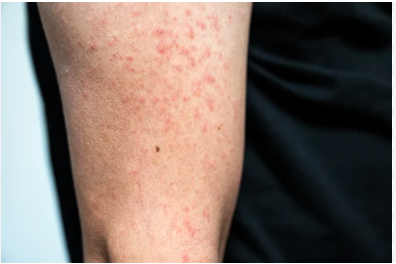This year, the United States has reported 188 instances.

With five months remaining in the year, the number of measles cases this year has already more than double that of all cases from previous year.
The Centers for Disease Control and Prevention announced statistics on Friday that showed there had been 188 cases recorded in 26 states as well as Washington, D.C. There have been 93 hospital admissions, the most of them being young children, but no deaths have been reported.
This year, there have been 13 measles outbreaks in the United States; the biggest one began in March at a migrant shelter in Chicago and resulted in over 60 cases.
Massachusetts, Michigan, Minnesota, New Hampshire, New York, Oregon, and Vermont have all reported cases of measles this month. Since the beginning of 2020, Massachusetts’ case was the first in the state.
Just four measles outbreaks and 58 cases overall occurred in the United States last year.
The number this year is the highest since 2019, the year that the nation was on the verge of losing its measles eradication designation. The majority of the more than 1,200 cases that year were linked to outbreaks among New York’s Orthodox Jewish communities.

There’s a chance that this year could turn out to be even worse than 2019, according to Dr. David Hamer, a global health and medicine professor at the Boston University School of Public Health. But according to CDC simulations, that’s extremely improbable.
Experts blame the increase this year on two primary causes: a spike in measles infections globally and a decline in vaccination rates in the United States.
According to the CDC, around 85% of those who contracted the measles this year were either unvaccinated or had an unclear vaccination status. Numerous instances have been connected to foreign travel, indicating that tourists who contracted the illness abroad brought it to the United States.
Dr. Erica Prochaska, a pediatric infectious diseases expert at Johns Hopkins Children’s Center, told reporters that vaccination rates throughout the world have an impact on infections that are spread in the United States. “The primary concern is that the immunization rate in the United States of America is below what it ought to be.”
If the contacts of an infected individual are not immune, the illness can spread to up to 90% of those in close proximity. In order to avoid persistent transmission, public health professionals advise that communities maintain a minimum of 95% vaccine coverage.
93% of American kindergarten students had gotten two doses of the measles, mumps, and rubella (MMR) vaccination as of the 2022–2023 school year, compared to 95% in the previous year. The rates were lower than 90% in twelve states and Washington, D.C.
The founder and head of the Mayo Clinic’s Vaccine Research Group, Dr. Gregory Poland, stated, “I find it surprising that the outbreaks aren’t more widespread.”
Certain individuals with impaired immune systems are not eligible for the MMR vaccination, he continued, “so they depend on all the rest of us getting two doses.”
Although there are occasionally outbreaks of the disease that start in other nations, measles was almost eradicated in the United States in 2000. Before the first measles vaccine was made available in 1963, the illness killed 400–500 persons a year in the United States and infected 3–4 million people annually.
According to Hamer, “it’s kind of dropped out of people’s minds as an important issue.”
He said that one factor contributing to the issue has been vaccine reluctance, which was exacerbated by false information during the epidemic.
During the epidemic, measles vaccination rates decreased globally to their lowest points since 2008.
According to Hamer, lockdowns have affected immunization programs in a number of low- and middle-income nations, and ongoing civil conflicts may have made it more difficult to vaccinate populations in nations like Ethiopia and Yemen, which account for a disproportionate number of measles cases worldwide.

As a result, several nations that had been on the verge of having sufficient coverage ultimately failed to provide routine children immunizations, including the measles, according to Hamer.
The World Health Organization and the CDC jointly released a study in 2022 that showed an increase in measles infections of 18% and fatalities from the disease of 43% globally between 2021 and 2022. During that period, there were big or substantial epidemics in 37 nations, up from 22 before.
A high fever, cough, conjunctivitis (pink eye), runny nose, white patches in the mouth, and a rash that covers the entire body are typical measles symptoms. Approximately 1 to 3 of every 1,000 children who have the measles pass away from side effects including brain enlargement or pneumonia.





